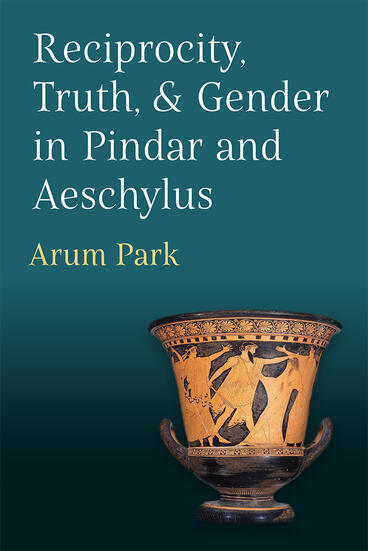Reciprocity, Truth, and Gender in Pindar and Aeschylus
How Pindar and Aeschylus—in distinct but complementary ways—treat the concepts of reciprocity, truth, and gender as interlocked and intertwined
Description
In Reciprocity, Truth, and Gender in Pindar and Aeschylus, author Arum Park explores two notoriously difficult ancient Greek poets and seeks to articulate the complex relationship between them. Although Pindar and Aeschylus were contemporaries, previous scholarship has often treated them as representatives of contrasting worldviews. Park’s comparative study offers the alternative perspective of understanding them as complements instead. By examining these poets together through the concepts of reciprocity, truth, and gender, this book establishes a relationship between Pindar and Aeschylus that challenges previous conceptions of their dissimilarity. The book accomplishes three aims: first, it shows that Pindar and Aeschylus frame their poetry using similar principles of reciprocity; second, it demonstrates that each poet depicts truth in a way that is specific to those reciprocity principles; and finally, it illustrates how their depictions of gender are shaped by this intertwining of truth and reciprocity. By demonstrating their complementarity, the book situates Pindar and Aeschylus in the same poetic ecosystem, which has implications for how we understand ancient Greek poetry more broadly: using Pindar and Aeschylus as case studies, the book provides a window into their dynamic and interactive poetic world, a world in which ostensibly dissimilar poets and genres actually have much more in common than we might think.
Arum Park is Assistant Professor of Classics at the University of Arizona.
Reviews
“This book is persuasive, engaging, and thought-provoking. Park’s arguments and interpretations are compelling . . . I very much hope the book will generate conversation and further engagement with the issues it raises and will lead to more classicists looking at Pindar and Aeschylus side by side.”
- Louise Pratt
—Louise Pratt, Emory University
“This study is unique both in its thematic breadth and in its generic scope. It offers new insights into the construction of gender in Greek literature by exploring in detail how gender informs the performance and the perception of truth and lies in epinician and tragedy. It also advances our epinician poetics by examining the intersection of truth and reciprocity between poet and patron, but also by exposing Pindar’s treatment of female desire and seduction as inherently threatening to male-dominated reciprocal relationships.”
- Zoe Stamatopoulou
—Zoe Stamatopoulou, Washington University in St. Louis
News, Reviews, Interviews
Read: Blog post by the author | May 18, 2023 | Link

